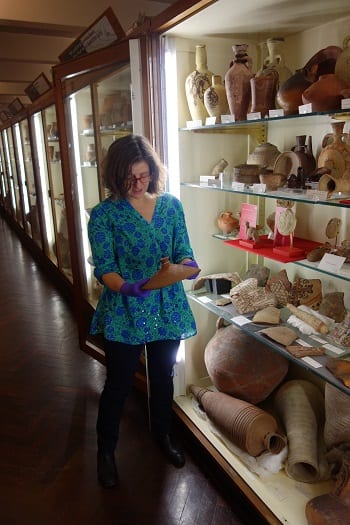The PACE Conservation Laboratory on UCL’s Bloomsbury Campus serves the needs of UCL’s diverse collections. The objects we have examined and treated in 2015 have ranged from fragile inorganic and organic archaeological materials, small sculpture and other works of art, dry- and fluid-preserved zoological specimens, all manner of scientific teaching models, an array of mechanical and electrical scientific instruments, and much, much more!!

Faience ‘shabti,’ during treatment: Petrie Museum of Egyptian Archaeology (UC20989); Bronze medal: UCL Art Museum (10026); Mammoth tusk: Grant Museum of Zoology (Z2978); Mathematical model: UCL Maths.
These objects have come to our Conservation Lab from UCL’s collections for a variety of reasons. Some need to be cleaned or repaired ahead of use in teaching, research, loan or display. Some present mysteries which close examination and scientific analysis may help unravel. Others have been selected for treatment as part of ongoing programmes to improve the condition of collections currently in storage.
Each object has a story to tell, and with the start of this New Year, we have made a resolution to share the work we do with our blog audiences. (more…)
Filed under Conservation, Cross-collections, Grant Museum of Zoology, Institute of Archaeology Collections, Petrie Museum of Egyptian Archaeology, Science Collections, Teaching and Research Collections, UCL Art Museum, Uncategorized
Tags: art, behind the scenes, conservation, detective work, museums, Petrie Museum, public engagement, Susi Pancaldo, UCL Art Museum
No Comments »
 Close
Close




